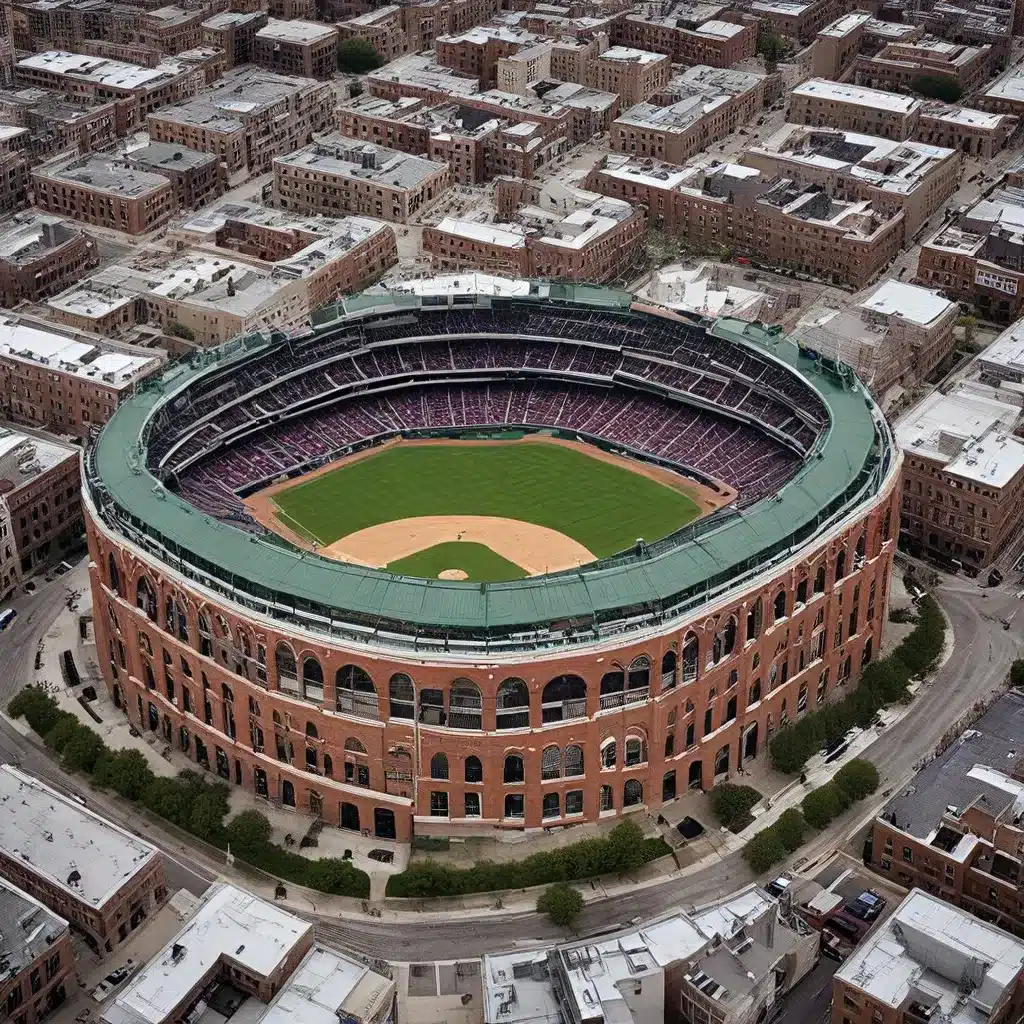
Nestled in the heart of Chicago’s vibrant North Side, Wrigley Field stands as a testament to the enduring legacy of America’s pastime. This iconic baseball stadium, home to the beloved Chicago Cubs, has captivated fans for over a century, offering a tangible connection to the golden age of the sport.
The Storied History of Wrigley Field
Wrigley Field’s origins can be traced back to 1914, when it was initially known as Weeghman Park, the home of the Chicago Whales baseball club of the Federal League. In 1920, the stadium was renamed Cubs Park when the Cubs franchise moved in, and it later became known as Wrigley Field in 1926, after the chewing gum magnate William Wrigley Jr. acquired the team.
Over the decades, Wrigley Field has witnessed some of the most iconic moments in baseball history. From the legendary Babe Ruth’s “called shot” in the 1932 World Series to the thrilling comeback against the Detroit Tigers in the 1935 World Series, the Friendly Confines have been the backdrop for countless unforgettable events. The stadium’s distinctive features, such as the iconic ivy-covered outfield walls and the manually operated scoreboard, have become as much a part of the Cubs’ identity as the team itself.
Architectural Marvels and Unique Traditions
Wrigley Field’s architectural design is a true marvel, blending classic elements with modern amenities. The stadium’s distinctive red marquee sign over the main entrance and the ivy-covered brick walls in the outfield have become instantly recognizable symbols of the ballpark. The hand-operated scoreboard, which has been in use since 1937, adds to the timeless charm of the stadium, creating a one-of-a-kind experience for fans.
The unique traditions and rituals that have taken root at Wrigley Field over the years are a testament to the stadium’s enduring influence on the sport. The singing of “Take Me Out to the Ball Game” during the seventh-inning stretch, the ringing of the Budweiser bell, and the iconic “Hey Hey” chant have all become integral parts of the Wrigley Field experience, binding generations of Cubs fans together.
Preserving the Past, Embracing the Future
As the oldest ballpark in the National League and the second-oldest in Major League Baseball, Wrigley Field has undergone a series of renovations and expansions to preserve its historic character while adapting to modern needs. In recent years, the stadium has undergone a multimillion-dollar restoration project, which has included the installation of a new video board, expanded concession areas, and improved fan amenities.
Despite these changes, the essence of Wrigley Field remains firmly rooted in its past. The stadium’s architecture, traditions, and connection to the Cubs’ rich history continue to captivate and inspire baseball enthusiasts from around the world. Fans can now explore the stadium’s more than 100 years of history through guided tours, which offer an insider’s perspective on the Friendly Confines.
The Lasting Impact of Wrigley Field
Wrigley Field’s impact on the sport of baseball extends far beyond the confines of its walls. The stadium has become a cultural icon, synonymous with the passion and dedication of Cubs fans. Its timeless charm and unwavering spirit have inspired countless films, television shows, and works of art, solidifying its place in the pantheon of American sports landmarks.
As the Old Stadium Journey continues to celebrate the rich history and enduring significance of historic ballparks, Wrigley Field stands out as a prime example of a venue that has transcended its role as a mere sports facility. It is a cathedral of the game, a place where the past and present converge, and where the stories and memories of generations of baseball enthusiasts are forever woven into the fabric of the sport.
Conclusion
Wrigley Field’s enduring legacy is a testament to the enduring power of baseball to captivate, inspire, and unite communities. As one of the oldest and most iconic stadiums in the sport, the Friendly Confines continue to draw in fans from all over the world, eager to experience the magic and nostalgia that permeates every inch of the ballpark.
Whether you’re a lifelong Cubs fan or a casual baseball enthusiast, a visit to Wrigley Field is a must-do for any true lover of the game. As you walk through the historic gates and bask in the timeless atmosphere, you’ll find yourself transported to a bygone era, where the echoes of legendary players and the dreams of countless fans still linger. Wrigley Field is not just a stadium – it is a living, breathing embodiment of the enduring spirit of America’s pastime.

